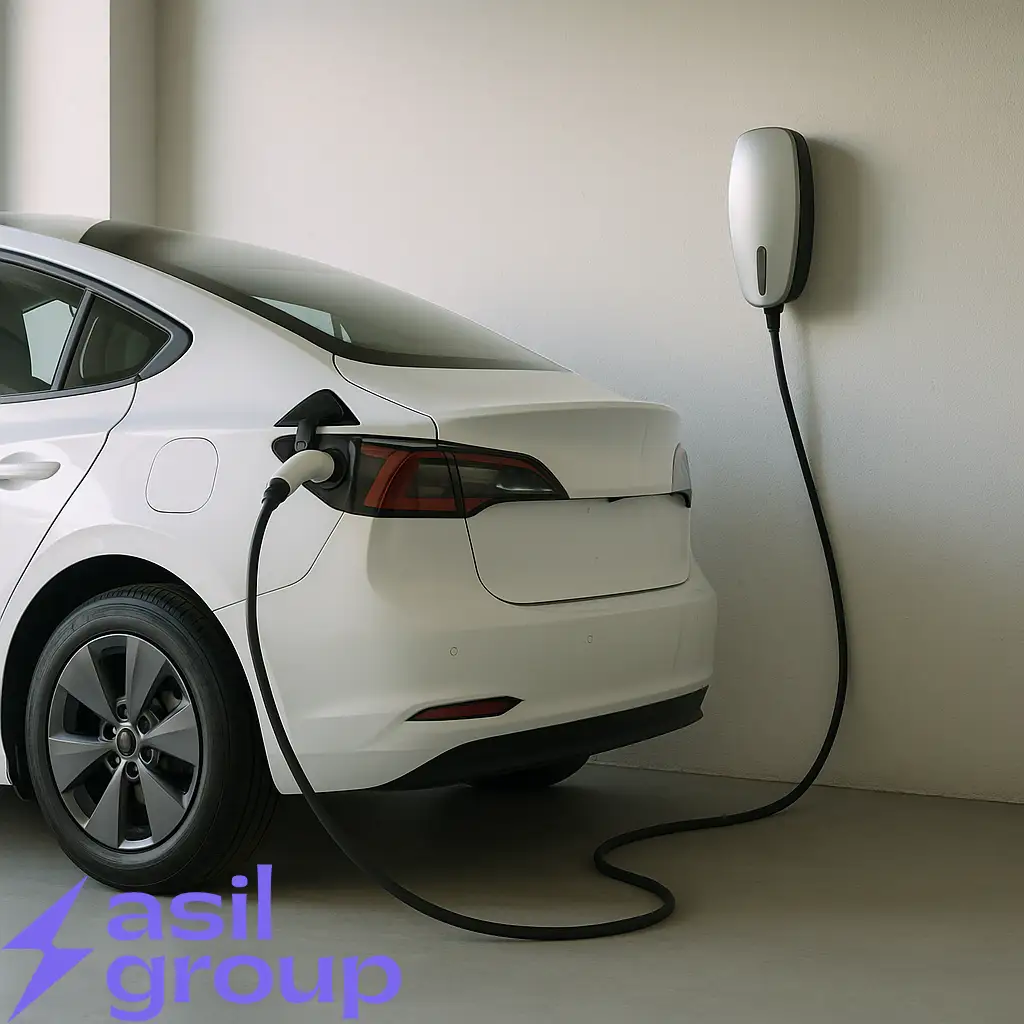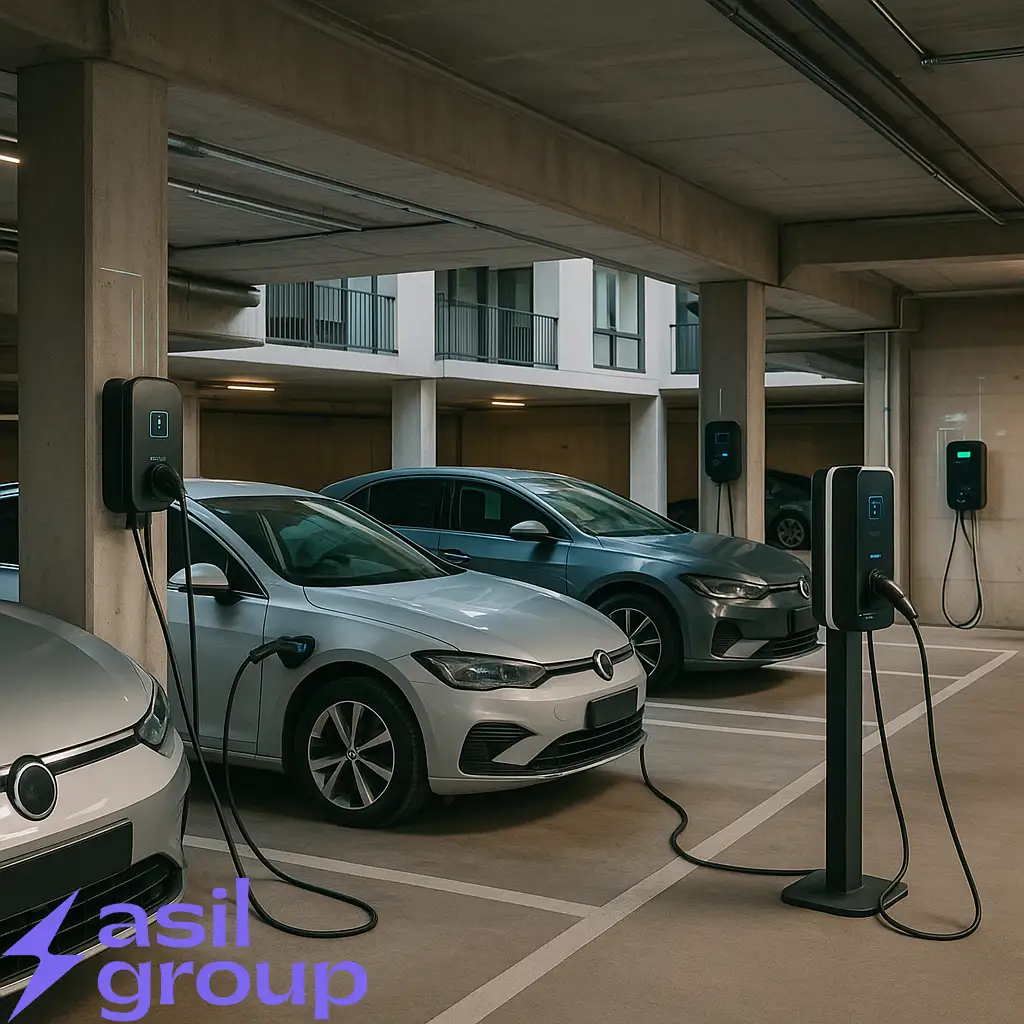
Smart Load Management in EV Charging Networks
Back to all posts As electric vehicle (EV) adoption accelerates globally,

As the world shifts towards more sustainable transportation, electric vehicles (EVs) are becoming more popular. One critical aspect of owning an EV is understanding the various charging options. Among these, AC chargers are important, especially for home and workplace charging. This article explores AC chargers for EVs, their benefits, types, installation, and considerations for EV owners, with insights from Asil Group.
AC chargers, or alternating current chargers, are essential parts of the EV charging setup. They convert AC electricity from the grid into DC power for the vehicle’s battery. These chargers are used for Level 1 and Level 2 charging, suitable for home and workplace use.
AC chargers are a key part of the EV charging setup, offering a practical and cost-effective solution for home and workplace charging. Understanding their benefits, types, and installation can help EV owners make informed decisions and get the most out of their charging setup.
By choosing the right AC charger and ensuring proper installation, EV owners can enjoy reliable and efficient charging. As EV adoption grows, AC chargers from Asil Group will remain a cornerstone of the charging infrastructure, supporting the move to cleaner and greener transportation.
When comparing AC chargers, DC chargers, and Wallbox chargers, it’s important to understand their features, costs, and best use cases. Here is a comparison to help you decide:
| Feature | AC Chargers | DC Chargers | Wallbox Chargers |
|---|---|---|---|
| Power Output | 3.7 kW to 22 kW | 50 kW to 350 kW or more | 7.4 kW to 22 kW |
| Charging Speed | Slower, ideal for overnight charging | Much faster, suitable for quick top-ups | Faster than standard AC, slower than DC |
| Installation Cost | Lower | Higher | Moderate |
| Maintenance Cost | Lower | Higher | Moderate |
| Connector Types | Type 1 (SAE J1772) or Type 2 (Mennekes) | CCS, CHAdeMO, or Tesla Supercharger | Type 1 (SAE J1772) or Type 2 (Mennekes) |
| Ideal Use Case | Home, workplaces, public places | Highway rest stops, urban fast-charging hubs, commercial fleets | Home, workplaces, commercial parking areas |
| Complexity of Infrastructure | Simpler | More complex | Moderate |
| Smart Features | Basic | Basic | Advanced (Wi-Fi, app integration, scheduling) |
| Safety Features | Basic | Advanced | Advanced (overload protection, temperature monitoring) |
| Overall Cost | Low | High | Moderate |

Back to all posts As electric vehicle (EV) adoption accelerates globally,

Back to all posts As electric vehicles (EVs) become more popular,

Back to all posts As electric vehicles (EVs) become more common,

Back to all posts As electric vehicle (EV) adoption accelerates globally,

Back to all posts As electric vehicles (EVs) become more popular,
Asil Group offers cost-effective and eco-friendly EV transportation solutions. We focus on convenience with AC chargers, DC fast chargers, and Wallbox chargers, serving premium locations and enhancing quality of life with smart, sustainable EV charging.
Asil Group offers cost-effective and eco-friendly EV transportation solutions. We focus on convenience with AC chargers, DC fast chargers, and Wallbox chargers, serving premium locations and enhancing quality of life with smart, sustainable EV charging.
Asil Group offers cost-effective and eco-friendly EV transportation solutions. We focus on convenience with AC chargers, DC fast chargers, and Wallbox chargers, serving premium locations and enhancing quality of life with smart, sustainable EV charging.
Phone: +98 21 22221422
Email: [email protected]